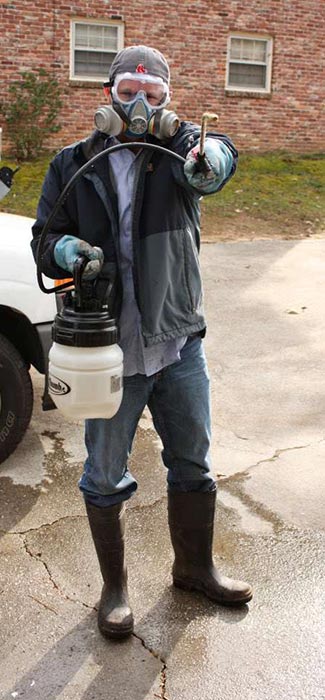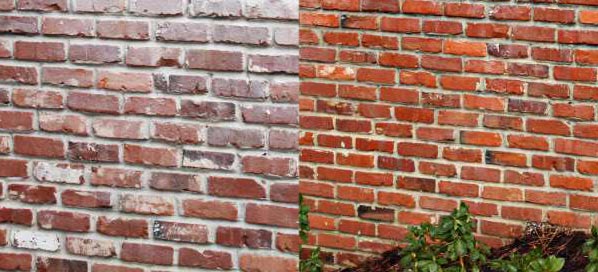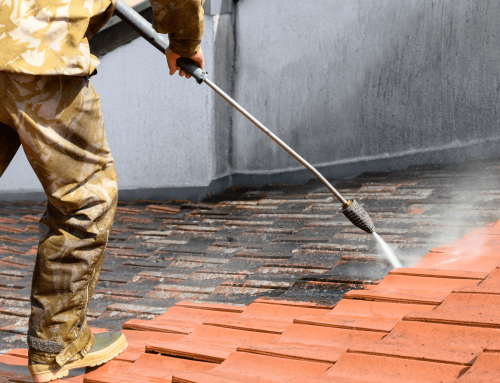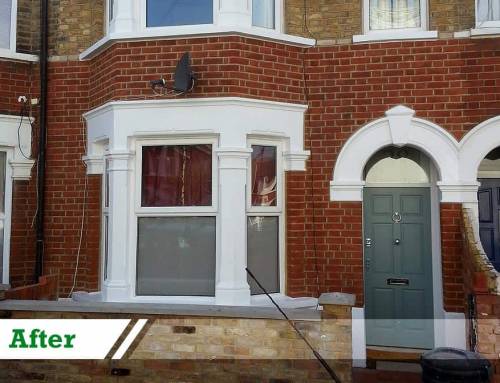Paint removal from brickwork – DIY advice and tips
Paint can successfully be removed from brick exteriors provided the bricks were in good shape before they were painted. Unfortunately, proper paint removal is a tedious job.
The term brickwork describes fired clay units which have a bewildering variation of constituents and properties. While bricks are made mainly from clay earth and fired in kilns, the variety of clay types, manufacturing and firing processes is vast, affecting not only their colour and surface texture, but also their performance and the way they respond to cleaning.
Bricks in historic and traditional walls vary from ‘red rubbers’, which can be carved with a finger nail, to highly fired and vitrified blue bricks, and from roughly textured stocks to shiny glazed bricks. Even within a single brick, variations in surface texture and hardness will be found which may prevent the safe use of abrasive cleaning, or reduce the pressure at which water jets can be used safely. Porosity also varies, and high absorbency may eliminate or stringently define the parameters of a chemical cleaning regime.
Paint removal before and after:
Brick painting is generally inadvisable. Paints and colourless water-repellent solutions can cause additional deterioration by trapping moisture in the brickwork. Also, moisture can be forced greater distances to escape, thereby increasing the mobilisation of damaging soluble salts. Notwithstanding this, where a render or paint has previously been stripped from brickwork it can, on occasions, be prudent to replace it to provide protection against the weather.
Best method for DIY paint removal: Gel or paste removers
In our experience, a paint removal system that uses a gel or paste to dissolve the paint is least likely to cause damage to historic bricks. Most paint before 1970 contained lead, making removal a potential safety and environmental hazard. Finding a safe method for exterior lead paint abatement has led to products that can be applied to large surfaces and that contain the removed paint for proper disposal.

The safest method employs strips of fabric material that are applied over the paint removal paste. When the paint softens, it adheres to the fabric and the whole mess can be peeled off without dispersing lead paint chips throughout the neighbourhood. Some of these stripping chemicals now are biodegradable or non-toxic. Not only are these formulas safer for people and the environment, the less caustic chemicals are less likely to cause damage to historic bricks.
Some stubborn paint and chemicals will remain and will need to be cleaned off after the initial paint removal. Scrubbing with a stiff bristle brush (not a wire brush) and rinsing with clean water, using no pressure, is least likely to cause damage or force excessive moisture into soft bricks. Any paint removal should be completed months ahead of freezing weather to allow any moisture to migrate out of the bricks and mortar.
Paint Removal Tips:
- Before you start paint removal make sure you have all the protective clothing and most importantly a face mask, goggles and gloves!
- Do tests first. On larger paint removal projects, make sure as far as possible that the area tested is representative of the whole area. This test can help you determine several things: The effectiveness of the paint removal system, the condition of the bricks under the paint, how the chemicals affect the bricks, how much work removing all the paint will be.
- The basic principle when removing paint, coatings or grime from brickwork is that the coating or dirt should be dissolved or softened and then washed off.
- Dirt and grime can often be softened adequately with water, while special products are available for stubborn or sulphated dirt.
- For washing off use a pressure-washer, but only hold the lance close enough to the surface to wash it, not so near that it damages the brick.
- The use of any sort of blasting, abrasives, wire brushes etc. for removing paint will cause irreparable damage to brickwork.
- The paint/coating layer may comprise coats of different types of paint/coating, necessitating the use of more than one paint-remover.





